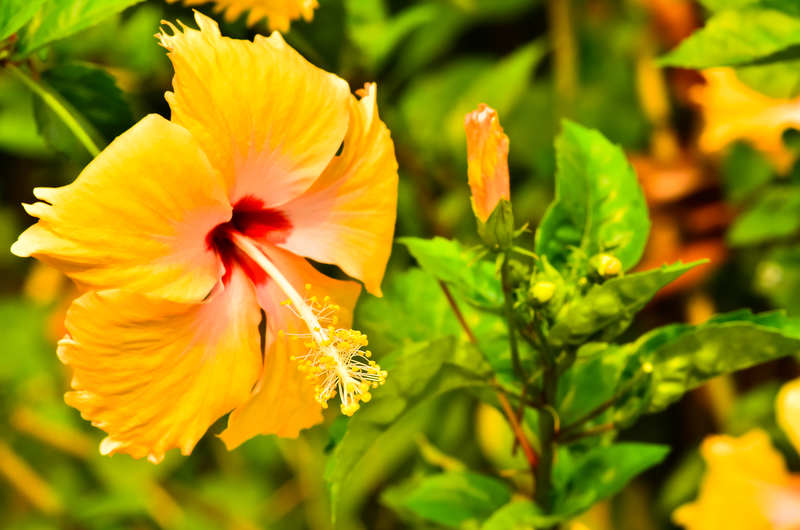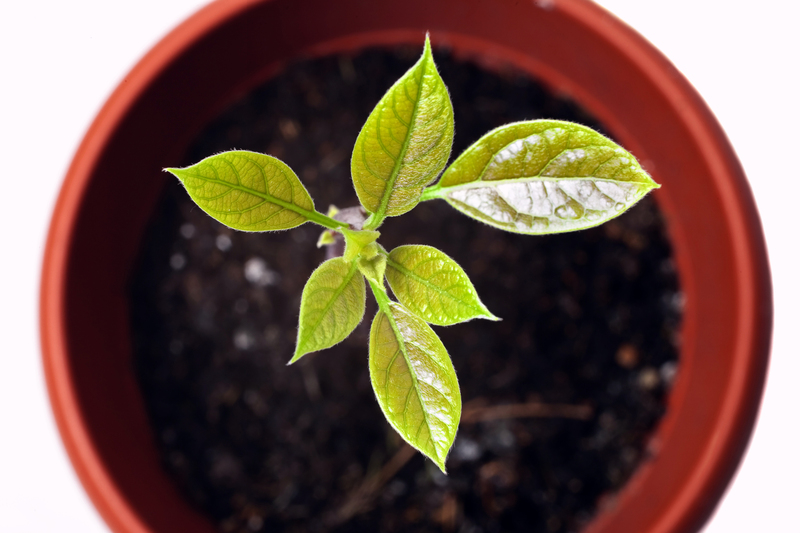Discover the Secrets to Thriving Orchids
Posted on 18/05/2025
Discover the Secrets to Thriving Orchids: Your Complete Care Guide
Orchids are among the most exotic and captivating flowering plants you can add to your home or garden. Their breathtaking blooms, intricate structures, and sheer diversity make them a favorite among plant enthusiasts and novices alike. Yet, many believe they are notoriously demanding, and the secrets to thriving orchids are shrouded in mystery.
But is orchid care really so complicated? With the right guidance, your orchids can not only survive but flourish, showcasing vibrant flowers year after year. This comprehensive guide reveals insider tips, scientific advice, and practical strategies so you can discover the secrets to healthy, thriving orchids--no matter your experience level.
The Orchid Family: Nature's Dazzling Masterpieces
Home to over 25,000 unique species and tens of thousands of hybrids, orchids belong to one of the largest plant families on Earth: Orchidaceae. From the humble Phalaenopsis (moth orchid) gracing supermarket shelves to rare wild species found only in remote forests, the world of orchids is astonishingly vast. Some key types popular among hobbyists include:
- Phalaenopsis: Also known as moth orchids, beloved for their long-lasting, sculptural blooms.
- Cattleya: Called the "Queen of Orchids," admired for their ruffled petals and enchanting fragrance.
- Dendrobium: Offering impressive diversity in colors and shapes, often used as cut flowers.
- Oncidium: Famous for their dancing "sprays" of small, vibrant flowers.
- Cymbidium: Known for their lengthy spikes and exceptional cold tolerance.
Learning about your orchid's particular variety is the first step to unlocking the secrets of successful orchid care. Now, let's unveil the fundamental rules for helping these plants thrive!

1. The Pillars of Orchid Care: Fundamental Secrets for Success
Light: Finding the Goldilocks Zone
Light is one of the key factors in thriving orchids. Most varieties prefer bright but indirect sunlight. Too little light can stunt growth and hinder blooming, while harsh, direct sunlight might scorch their delicate leaves. Here's how to strike the perfect balance:
- Eastern or Western Windows: These spots offer gentle morning or late afternoon sun--ideal for most orchids.
- Sheer Curtains: Diffuse excessive sunlight with a sheer curtain to mimic the dappled light of a tropical forest.
- Leaf Color Cues: Healthy orchid leaves should be light to medium green. Dark green leaves often signal insufficient light, while yellowish tones suggest too much.
Watering Wisely: Avoiding Common Mistakes
Overwatering is the #1 enemy of thriving orchid plants. Their roots need both moisture and air--never let orchids stand in soggy soil! Here's how to water like a pro:
- Soak and Drain: Water thoroughly, allowing moisture to run through the pot; then let the roots dry before the next watering.
- Check the Media: Only water when the top inch of the potting mix feels dry. Overly damp media invites root rot--a fatal orchid disease.
- Consider Humidity: Orchids love humidity (45-65%). Use trays with pebbles and water or a humidifier to maintain optimal levels, especially in dry climates.
- Morning Watering: Always water orchids in the morning to prevent damp, cool conditions overnight that foster disease.
The Right Potting Mix: Let the Roots Breathe
Regular potting soil is not suitable for orchids. Instead, choose a special orchid mix containing:
- Bark chips (fir bark or pine bark)
- Sphagnum or peat moss
- Charcoal or perlite
These ingredients allow for exceptional aeration and drainage, imitating the wild conditions where many orchids grow on tree branches rather than soil. Remember to repot every 1-2 years to refresh the media and prevent decomposed material from smothering roots.
Feeding for Spectacular Blooms
Another critical secret to orchid health and thriving is balanced fertilization, especially during active growth periods:
- Use a balanced orchid fertilizer (20-20-20) diluted to half or quarter-strength.
- Feed every other watering during spring and summer, then reduce or pause as plants enter a rest period in fall and winter.
- Flush the potting media with plain water monthly to prevent fertilizer salt buildup, which can damage roots.
2. The Advanced Secrets: Making Your Orchids Truly Thrive
Mastering Air Circulation
In the wild, orchids enjoy a constant gentle breeze. Stagnant, humid air can invite pests and disease, so ensure good air movement around your plants:
- Use a small fan set on low and indirect, especially in enclosed spaces.
- Leave enough space between pots for air to flow freely.
Understanding Orchid Dormancy and Rest Periods
Many orchid species have built-in rest periods after blooming. During this time:
- Reduce watering and fertilizer.
- Keep the plant in a slightly cooler spot to mimic its natural cycle.
- Wait until new growth appears to resume regular care.
Respecting dormancy is a hidden secret to flowering orchids repeatedly.
Handling Pests and Diseases
Even the healthiest orchid can face occasional challenges. Common issues include:
- Mealybugs and spider mites: Wipe leaves with a damp cloth and treat with insecticidal soap.
- Root rot: Cut away mushy roots and repot in fresh orchid mix, watering less until new roots appear.
- Leaf spotting: Ensure good air circulation, avoid wetting leaves, and treat with a fungicide if necessary.
Early detection and prompt action are the ultimate secrets to resilient, thriving orchid collections.
Encouraging Your Orchid to Bloom Again
Many beginners are frustrated when orchids refuse to re-bloom. The truth is, achieving consistent blooms is one of the most sought-after orchid care secrets! Tips include:
- Provide a slightly cooler nighttime temperature (5-10?F lower than daytime) for several weeks in fall--this can trigger flower spikes in most Phalaenopsis and other popular orchids.
- Verify that light, feeding, and rest cycles have been properly observed as outlined in this guide.
- Be patient: Orchids operate on a different schedule than many other houseplants, and some require months to develop and open new buds.
3. Indoor Orchid Care Secrets: Tips for Home Growers
Choosing the Perfect Orchid for Your Space
If you're new to growing orchids indoors, start with user-friendly varieties such as Phalaenopsis or Dendrobium. They adapt well to average home conditions and reward consistent care.
Orchid Pots and Containers: More Than Just Looks
- Clear plastic pots allow you to monitor root health and moisture levels easily.
- Choose containers with ample drainage holes--healthy roots need both air and periodic drying.
- Decorative outer pots are fine, but always ensure excess water can escape freely.
Orchid Placement: Matching Plant Needs to Your Home
- Avoid spots near heat vents, air conditioners, or drafty windows.
- Place orchids in locations with gentle airflow and stable temperature ranges (60-80?F).
- Grouping orchids together can help increase humidity passively.
Pro Tip: If your space lacks natural light, supplement with fluorescent or LED grow lights to encourage lush foliage and dependable flowering.
Seasonal Care Adjustments: Responding to Nature's Rhythms
Secrets to thriving orchids at home involve adapting your care through the seasons:
- Spring/Summer: More frequent watering and feeding, watch for new roots and leaves.
- Autumn/Fall: Gradually reduce watering, provide cooler nights to encourage flower spikes.
- Winter: Allow for rest; place away from cold drafts and monitor for low humidity.
4. Troubleshooting: Solving Common Orchid Problems
- Limp or shriveled leaves? Underwatering or damaged roots--inspect the root system and adjust watering.
- Leaf yellowing? Could signal too much sun or natural leaf aging--move to indirect light or remove the oldest leaf.
- Stunted growth? Likely insufficient light--supplement as needed and ensure correct fertilization.
- Mold or mushrooms in the pot? Indicates potting mix is staying too damp; repot and improve drainage.
- No blooms for over a year? Check light, temperature drops, and rest cycles--adjust accordingly to promote blooming.
5. Orchid Success Stories: Real-Life Inspiration
Thousands of orchid lovers have gone from frustrated to flourishing by applying these practical secrets. Whether in an apartment or a backyard greenhouse, thriving orchids are within everyone's reach. Ask anyone who's coaxed an orchid back to health or witnessed their first breathtaking bloom--orchid growing is as rewarding as it is beautiful.
If you follow these expert orchid care secrets, you'll soon enjoy:
- Lush, green foliage and vigorous root systems
- Vibrant, long-lasting floral displays multiple times a year
- Healthy, resilient plants capable of withstanding common pests and diseases

6. Orchid Care FAQs: Clearing Up the Myths
-
Do orchids need to be watered with ice?
No! Using ice cubes is a widespread shortcut but not ideal. Room-temperature water and proper drainage are best for happy, thriving orchids. -
Is re-blooming possible for beginners?
Absolutely! With consistent light, temperature cues, and patience, even new orchid growers can enjoy spectacular floral displays. -
How long do orchid flowers last?
Many bloom for 6-12 weeks and can re-bloom periodically with the right care. -
What's the easiest orchid for beginners?
Phalaenopsis (moth orchids) top the list for manageable care and rewarding blooms. -
Can orchids be grown outside?
In warm, frost-free regions, many orchids thrive outdoors--just protect them from harsh sun and cold snaps.
Conclusion: Unlock the True Joys of Growing Thriving Orchids
By embracing these orchid care secrets--the perfect balance of light, moisture, nutrition, and attentive observation--you'll turn even the most finicky plant into a stunning centerpiece. Whether you're growing your first Phalaenopsis or tending an expansive collection, remember:
- Orchids aren't complicated--they're simply unique.
- Consistency and observation unlock the path to thriving orchid blooms.
With patience and these science-backed strategies, you'll discover the joy, beauty, and intrigue of nurturing orchids that truly thrive.
Start Your Orchid Adventure Today & Discover the Secrets to Thriving Orchids at Home!
For more expert orchid tips, troubleshooting advice, and inspiration, subscribe to our newsletter or explore more in-depth guides on our website. Happy growing!



